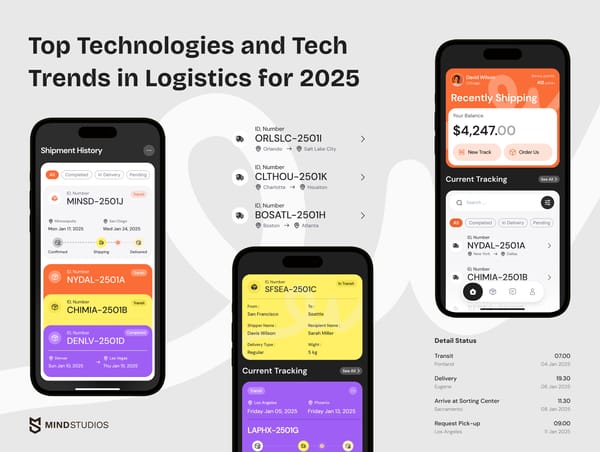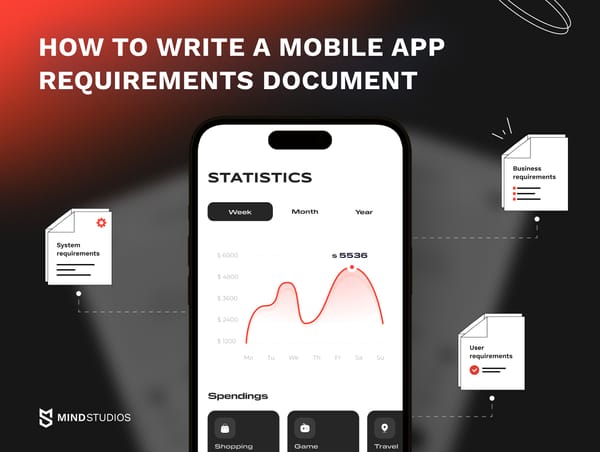In this article, we talk about the remote software development hiring processes you should go through if you have an app idea and wish to build a successful product. We also cover recommendations on how to hire remote developers or software development teams and things to look out for. Read on for industry insights from a software development company.
Remote is the new normal, and home is the new workplace. While this all started due to pandemic lockdowns, recent research by Ipsos shows that about two-thirds of the global working population would like to either continue working from home permanently or have a flexible home/office work schedule even after all pandemic restrictions have been lifted.
What types of remote development teams are there?
Before hiring remote developers, let's talk about types. There are four main options for those who wish to build their own software product:
- Hire an in-house team
- Find freelance developers
- Use an outstaffing company
- Choose an outsourcing software development company

-
An in-house team used to be a team of full-time developers that worked from their employer’s office. With the pandemic, in-house teams moved to the comfort of their homes, but the essence stayed the same.
An in-house team is composed of developers who work for your company and receive full remuneration packages the way your other employees would, including insurance, corporate benefits, paid sick leave and vacations, and annual salaries.
In many cases, employers provide their remote in-house teams with work equipment and subscriptions to services relevant to the job.
-
Freelancers are individual specialists you can find on job boards, forums, and other online spaces dedicated to their line of work or specialization. With freelance developers, you’ll need to handpick each specialist you need — an iOS developer, designer, quality assurance engineer, etc.
-
Outstaffing companies offer their clients' different remote developers for hire. Basically, outstaffing helps you save time on finding and negotiating with separate freelancers — the outstaffing service provider does it for you. Outstaffing companies sometimes work with freelancers, and sometimes they have in-house employees for each specialization.
-
Outsourcing software development companies offer full-stack teams of remote developers from among their in-house employees. Compared to outstaffing specialists, outsourcing teammates usually know each other well and have solid work dynamics in place.
In most cases, a single outsourcing company can provide you with a complete team to start building your project from scratch right away.
Why hire remote developers?

It’s true that many companies and even more employees plan to stay partially or fully remote even after the COVID-19 danger passes. But what benefits does partnering with remote staff bring to those who want to create their own mobile or web products?
If we’re talking about all types of remote teams — remote in-house, freelancers, and outsourcing companies — there are two main benefits you get by going remote: lower costs and a wider talent pool.
Reduced costs
By outsourcing development, you’ll be able to significantly cut costs within several categories of business spending. The office itself might cost a fortune in some states. You’ll be saving on:
- Office rent and utilities
- Office equipment and furniture
- Employee transportation
The second category you can save on when you hire remote software developers is employee pay. With remote software engineers, you can choose to hire experienced developers from countries with lower average rates.
When hiring remote developers through outsourcing or outstaffing, you also save on tech resources — development-grade computers, access to certain assets, upskilling, etc.
Wider selection of professionals
Being open to employing remote developers increases your talent pool. When you’re hiring specialists to sit in your office, your selection is usually limited to those in your region or country. Inviting specialists from abroad or even from far-reaching locations in your own country will cost you.
Besides, not all specialists are ready to relocate just anywhere, so unless you live in a region many people would gladly relocate to, your chances of finding quality talent for in-office work might be slim.
Allowing software developers to work remotely will make more specialists look favorably upon your job offer. Depending on how large a time difference you consider acceptable, your talent pool can be the whole world.
You might also want to take into consideration that freelancers and developers working with outsourcing companies tend to upskill faster than in-house teams due to high market competition.
A guide to hiring remote developers
Now that we’ve offered a glance at types of remote teams, let’s continue with recommendations on how to hire a development team.
Whether you’re looking for a software developer or team to join your own in-house development department or you want to outsource your project to a company, there are several steps you’ll have to take.
Step 1. Know exactly what (and who) you’re looking for
To make the process of looking for developers go faster and easier, it’s important to have as clear an idea as possible of what software you want to create. It’s useful to conduct preliminary research into your niche, analyze your target audience and competitors, and decide whether you wish to create a web or mobile product.
To make the process of choosing a remote development team easier and more efficient, we recommend preparing a list of requirements and features you’d like to have in your products. You can analyze your main competitors and survey your target audience to know what’s lacking in current market offers.
A good idea would be to perform a SWOT analysis — go over the strengths, weaknesses, opportunities, and threats for your business.
A well-performed analysis will help you:
- Understand your target audience
- Figure out the main pain points users have with existing solutions
- Pinpoint your main competitors and analyze their strengths and weaknesses
- Choose a platform to develop for first
- Prioritize features
When you have a clear understanding of what it is you want to build, it’s time to choose where you’d like to go looking for remote software developers.
Step 2. Choose where you want to look for remote developers

With a whole world of remote developers to choose from, it’s easy to get lost. Let us help you narrow down your choices.
Basically, your options come down to hiring remote developers in your own country or abroad. What should you consider when deciding on remote developers from outside your local market?
- Prices
If we round up average prices for software development in different parts of the world, the picture will be something like this:
| Software developer salaries around the world | |
|---|---|
| Location | Annual salary (USD) |
| USA | $83,000 to over $100,000 |
| Western Europe | $50,000 to $64,000+ |
| Latin America | $31,000 to $37,000 |
| Eastern Europe | $24,000 to $38,000 |
| India | $16,000 |
You’ll need to factor remote developer salaries into your budget, which will impact your search criteria.
- Specialization
While stereotypes don’t allow you to assess each and every developer, most countries known to have great software developers have fields in which those developers tend to be better qualified.
The popular tech platform HackerRank has derived a sort of ranking for software engineers from all around the world based on the platform’s coding challenges and how developers from different countries score in them.
Surprisingly, US developers haven’t come out as winners in any category.

- China scored the highest overall in math and in functional programming.
- The crown for Ruby challenges went to developers from Finland.
- Japan somewhat predictably aced it in artificial intelligence.
- Developers from Ukraine beat everyone in security implementation.
- C++ coding challenges were conquered by developers from France.
- The top results in SQL belong to Denmark.
Rankings like these aren’t the ultimate solution, but they can help you search for the best remote employees if you know (at least roughly) what your product needs are. You can cast your gaze in the right direction and not waste time looking for the tech stack you need somewhere where few to no developers specialize in it.
- Time difference
When it’s 10 am in Ukraine, it’s midnight in California and 4 pm in Tokyo. Working with remote staff means adjusting your day to accommodate regular communication. It’s best to choose remote programmers whose waking (and working) hours overlap with yours at least at some point during the day.
It will also make building your product easier if your remote team isn’t scattered too widely across the globe and can easily adjust their working hours to overlap.
- Language barriers
Not speaking the same language as your employees might become a serious hindrance to work. Luckily, developers in most locations have at least an intermediate level of English, which makes communication possible. However, it’s important to check the quality of communication at the early stages of getting to know your potential team.
- Cultural differences
It’s important to consider the cultural differences between you and your developers, as they can breed miscommunication worse than language differences. Different countries treat work differently, and if such differences are not communicated properly, they can come to haunt the project.
When you’re looking for a remote team, we advise you to be prepared to explain what might seem obvious to you and listen to similar explanations of what seems obvious to your team.
Step 3. Look through the options

Having selected an outsourcing destination, you will have narrowed down your developer options significantly, but the pool will still be large. Here are some pointers on where you can find remote developers.
If you’re looking to hire a remote software development company, the best place to look is Clutch.
Clutch is the largest platform where you can find ratings and reviews of nearly all software development companies. The platform is easy to navigate and has several options to sort companies. On Clutch, you can sort by:
- Location
- Company size
- Budget you can allocate for development
- Hourly developer rate
- Technologies a company works with (AI, blockchain, AR/VR, IoT, etc.)
- Industry
- Number of reviews
Clutch will also provide you with each company’s portfolio and a summary of their works and will note the industry the company works with most. There are also reviews from clients, making Clutch the best place to check out any software development company.
If you’re looking for freelance remote developers, the place you want to visit is Upwork. This platform is popular among experienced developers and those looking for experienced developers.
Upwork has three main options to find talent:
- Browse freelance offers with a wide selection of filters (from location, rating, and price to delivery time, specialization, and level of English)
- Post your job offer and wait for freelancers to pick it up
- Hire Upwork’s talent scouts to find you developers based on your requirements
The talent scout option will save you a lot of time, as the number of freelancers on Upwork is huge. It’s also free. However, at the time of writing this article, this feature is only available to users from the US, Canada, the UK, Australia, and Israel.
Step 4. Narrow down your selection to 5–8 options

As you look through your potential hires — companies or freelancers — here are the things you need to pay attention to.
Portfolio
How many projects has the company or developer completed since they started their work? How many of those projects still work successfully? Are there projects in the portfolio similar to your idea?
It’s important to first single out developers and development teams that have successfully completed projects in your niche or a similar niche. Just as knowing the terrain makes a journey smoother and faster, hiring developers who already know the intricacies of your industry makes it easier to avoid most pitfalls and build a successful product.
Tech expertise
If your product has some kind of new or rare functionality — for example, if it’s an app like IKEA Place that uses augmented reality — you’ll need professionals who know their way around the relevant technology.
Genuine reviews
Ratings are great, but reviews from clients paint a better picture of not just the quality of work but the processes behind it.
Reviews will tell you whether communication is easy, deadlines are upheld, prices are set correctly, and more. By reading reviews and comparing them with ratings, you’ll have an image of each company that will help you know what to expect and whether a specific company or freelancer will be a good hire for your project.
Step 5. Contact all your selected developers
It’s important to not make a choice blindly based only on what you see in the portfolio. Once you’ve narrowed down your options to a handful of companies or developers, reach out to all of them. By the way they communicate back, you’ll also learn a lot about them.
Are developers’ replies swift? How are they worded? Do you feel comfortable speaking to developers via email and video calls? Are their soft skills as good as their hard skills?
Additionally, many outsourcing companies will agree to perform some small task at little or no cost to prove to their potential clients that they know what they’re doing.
The task might be creating an approximate estimate based on your product description or providing a niche overview that could be part of discovery and research. Either way, it should be something that will show you the developers’ professionalism, communication, and work ethic.
Step 6. Make the final decision
Analyzing under ten potential hires is way easier than trying to choose from a thousand options. Having contacted everyone on your final list, you’ll be ready to make a decision and hire remote software developers that you feel comfortable with. It’s time to start working.
The IT industry moves fast, and the earlier you start developing your project, the better the chance you have at making it before anyone else. When you start thinking about how to hire a remote development team, it’s important to have a solid process in place so development doesn’t drag on for weeks or months.
We hope our guide helps you on your way. We’ll be more than happy to offer you our development services. Check out our projects and contact us for more information.

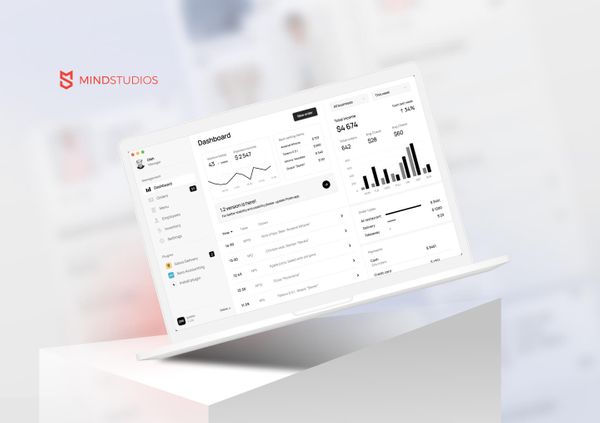
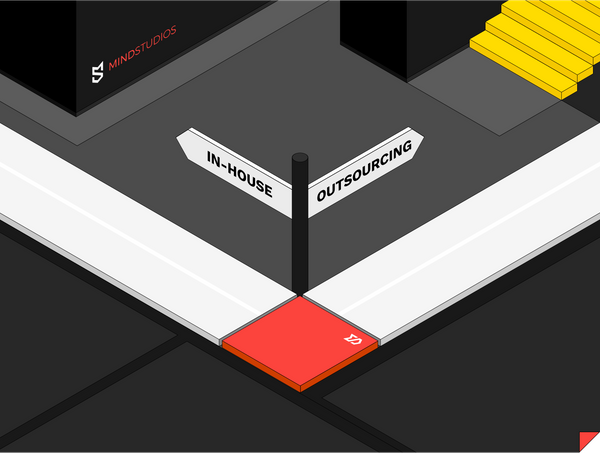
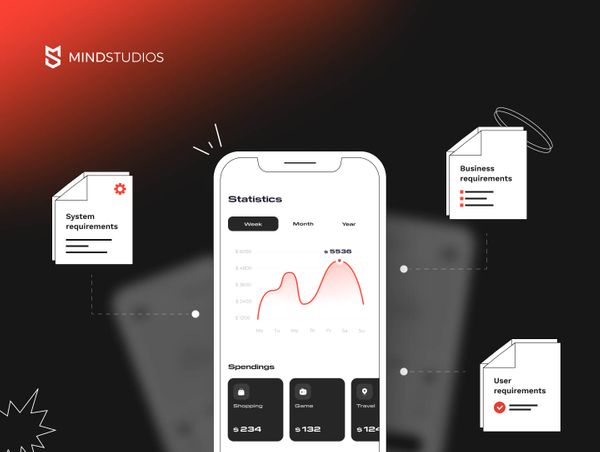

![How to Create an On-Demand Medicine Delivery App [Expert Guide]](https://themindstudios.com/blog/content/images/size/w600/2025/03/IMG-1-Cover-6.jpg)
